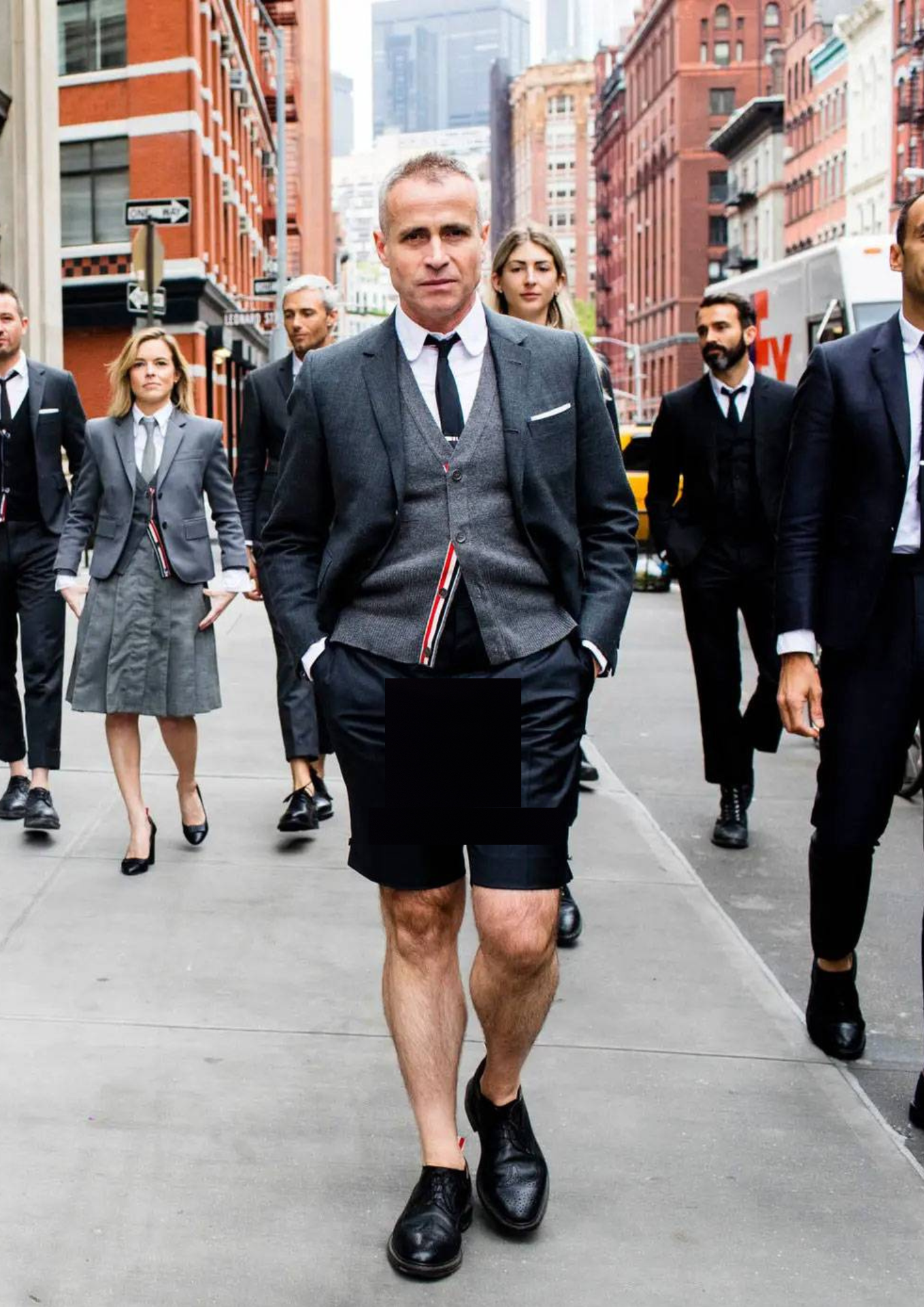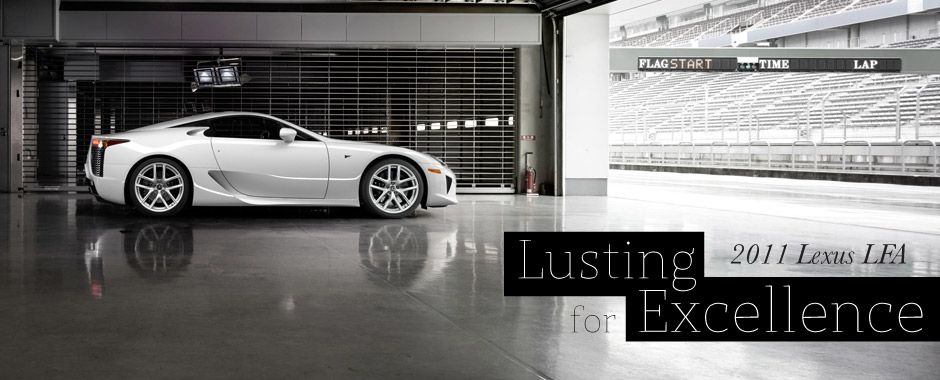 By Shin Takei
By Shin Takei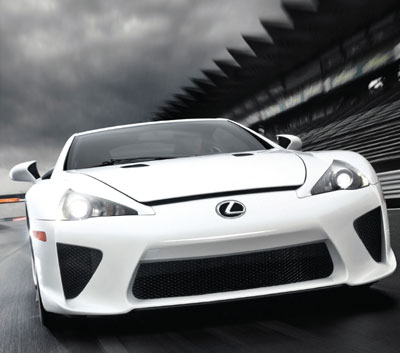
In 1967, Sean Connery blasted through the streets of Tokyo as James Bond in You Only Live Twice. The car was a convertible Toyota 2000GT. Only 351 examples were manufactured and two coupes had their roofs cut specifically for the movie to accommodate Connery’s height. Designed by Albrecht Goetz, the car made quite an impression. Up until this point, nothing manufactured in Japan came close to being categorized as a supercar.
Fast forward forty years and we now have the Lexus LFA. Although Lexus quickly became a member of the luxo-car market, it was lacking a sporting model, especially one that would position itself at the top of the line. In 1999, Toyota announced it would compete in the top level of motorsports Formula One and based their operations in Cologne, Germany. At the same time, they started development of the supercar. With their motto of “Relentless Pursuit of Perfection,” the engineers at Toyota, with the help of Yamaha (as in the 2000GT) and the F1 development team in Cologne, created the LFA. At $375,000 it is priced competitively with the current crop of supercars, including Aston Martin, Audi, Bentley, Ferrari, Lamborghini, Maserati, Mercedes Benz and Porsche.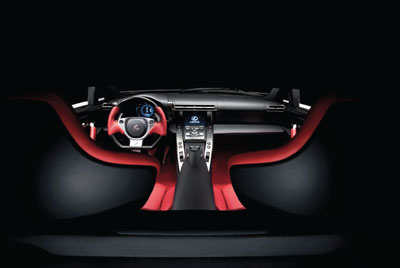
We at BHL had been waiting for an opportunity to test drive the LFA on a race track and we got our wish from sports car champion, Scott Pruett, showing us how to drive the car. The Auto Club Speedway in Fontana became our test ground. As soon as Scott sped up from the pits, my helmeted head snapped back as we accelerated at an astonishing pace. On the NASCAR track, we reached 180 mph mere inches from the wall. As Scott turned left for the infield course, the pull from the G-force planted my head against the passenger window. We went through all the corners at a blinding speed.
Soon it was my turn to drive. The LFA has a sweet sounding exhaust. Most V-10 engines don’t make a good sound like a V-8 or V-12, but collaboration with Yamaha resulted in this F1-like sound both inside and outside.  The digital tachometer face turns red to indicate it’s time to upshift (in case you couldn’t hear the engine roaring at you). The paddle shifters have a lighter feel for upshifts and a slightly harder feel for downshifts. But gear changes are smooth and precise with with four driving modes – AUTO, SPORT, NORMAL and WET. Scott belted out commands like slam on the brakes, downshift, hit the apex, accelerate, upshift, stay high, stay in the middle and you can do better than that. Before I knew it, the few laps allowed were over. But the experience certainly convinced me that Toyota had done their homework.
The digital tachometer face turns red to indicate it’s time to upshift (in case you couldn’t hear the engine roaring at you). The paddle shifters have a lighter feel for upshifts and a slightly harder feel for downshifts. But gear changes are smooth and precise with with four driving modes – AUTO, SPORT, NORMAL and WET. Scott belted out commands like slam on the brakes, downshift, hit the apex, accelerate, upshift, stay high, stay in the middle and you can do better than that. Before I knew it, the few laps allowed were over. But the experience certainly convinced me that Toyota had done their homework.
The LFA is easy to drive because it is so stable at high speeds. At 3,265 lbs and a front mid-engine rear wheel drive setup with 48/52% front/rear weight distribution, the car exhibits very manageable steady handling characteristics. No drama turning the corners.
Powered by a 4.8-liter V10 engine, the car generates 552 hp at 8,700 rpm 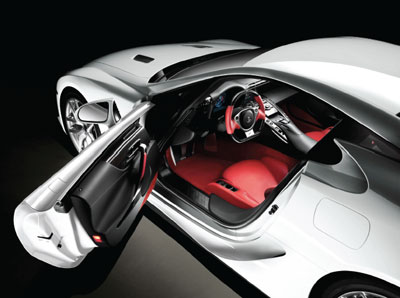 and 354 lb.-ft. of peak torque at 6,800 rpm. Acceleration goes from 0 to 60 in 3.6 seconds and achieves a maximum speed of 202 mph. The car achieves its high speeds due to an independently controlled throttle body for each cylinder, high-volume 12-hole injectors and dual Variable Valve.
and 354 lb.-ft. of peak torque at 6,800 rpm. Acceleration goes from 0 to 60 in 3.6 seconds and achieves a maximum speed of 202 mph. The car achieves its high speeds due to an independently controlled throttle body for each cylinder, high-volume 12-hole injectors and dual Variable Valve.
Only 500 LFAs will be built worldwide and all have been preordered except for 60. Each LFA is hand built to the customer’s order. Included in the base price are three configurations ranging from Leather or Alcantara®-trimmed seats, Lexus Navigation System, Mark Levinson Premium Surround Sound system and Lexus Enform™ with Safety Connect™. There are 30 exterior colors, six brake caliper colors and 12 interior colors to choose from.
For its chassis and bodywork, Carbon Fiber Reinforced Plastic construction is utilized to deliver a light, strong and impact-resistant structure. Originally, Toyota started out as a textile mill and their loom works in 1926 were the most advanced in the world, so weaving complex carbon fiber material is a natural. 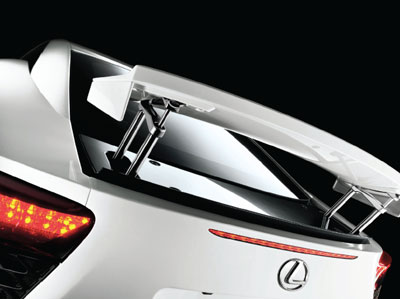 Additionally, lightweight aluminum alloy suspension components; six-piston front and four-piston rear calipers to grip the Carbon Ceramic Material brake rotors; and a specially calibrated Vehicle Dynamics Integrated Management system all contribute to a rock steady ride.
Additionally, lightweight aluminum alloy suspension components; six-piston front and four-piston rear calipers to grip the Carbon Ceramic Material brake rotors; and a specially calibrated Vehicle Dynamics Integrated Management system all contribute to a rock steady ride.
Developed extensively at the Nordschleiff and at the Nurburgring 24 hour race, the LFA has positioned itself right in there with all the supercars. Is it worth the $375K? You bet it is, every penny of it and it’s the most passionate sports car produced by a Japanese company.


